Showing Spotlights 121 - 128 of 203 in category All (newest first):
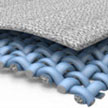 Energy-scavenging fabrics based on nano-sized generators that have piezoelectric properties could eventually lead to wearable 'smart' clothes that can power integrated electronics and sensors through ordinary body movements. Researchers have now demonstrated a new type of fully flexible, very robust and wearable triboelectric nanogenerator with high power-generating performance and mechanical robustness. This was achieved by applying a bottom-up nanostructuring approach where a silver-coated textile and polydimethylsiloxane (PDMS) nanopatterns based on ZnO nanorod arrays were used as active triboelectric materials.
Energy-scavenging fabrics based on nano-sized generators that have piezoelectric properties could eventually lead to wearable 'smart' clothes that can power integrated electronics and sensors through ordinary body movements. Researchers have now demonstrated a new type of fully flexible, very robust and wearable triboelectric nanogenerator with high power-generating performance and mechanical robustness. This was achieved by applying a bottom-up nanostructuring approach where a silver-coated textile and polydimethylsiloxane (PDMS) nanopatterns based on ZnO nanorod arrays were used as active triboelectric materials.
Feb 25th, 2015
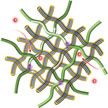 Researchers have created a free-standing carbon nanotube paper electrode with high sulfur loading for lithium-sulfur batteries employing a bottom-up strategy to design and fabricate a hierarchical structure. This new fabrication method does not employ aluminum foil or binders, thereby fully utilizing the advantage of a Li-S system with high specific capacity. This proof-of-concept experiment indicates that the rational design of the nanostructured electrode offers the possibility to efficiently use the active materials at practical loading.
Researchers have created a free-standing carbon nanotube paper electrode with high sulfur loading for lithium-sulfur batteries employing a bottom-up strategy to design and fabricate a hierarchical structure. This new fabrication method does not employ aluminum foil or binders, thereby fully utilizing the advantage of a Li-S system with high specific capacity. This proof-of-concept experiment indicates that the rational design of the nanostructured electrode offers the possibility to efficiently use the active materials at practical loading.
Oct 17th, 2014
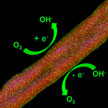 Researchers have demonstrated a unique coaxial carbon nanocable material with pristine carbon nanotubes as the core and nitrogen-doped wrinkled carbon layer as the shell. The active sites rendered by the surface enriched dopant atoms on the carbon nanocables are accessible and effective to catalyze the oxygen involved electrochemical reactions. These coaxial nanocables afford higher ORR/OER current compared with the routine bulk doped nitrogen-doped carbon nanotubes.
Researchers have demonstrated a unique coaxial carbon nanocable material with pristine carbon nanotubes as the core and nitrogen-doped wrinkled carbon layer as the shell. The active sites rendered by the surface enriched dopant atoms on the carbon nanocables are accessible and effective to catalyze the oxygen involved electrochemical reactions. These coaxial nanocables afford higher ORR/OER current compared with the routine bulk doped nitrogen-doped carbon nanotubes.
Oct 10th, 2014
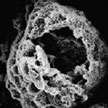 Graphene and graphene-based materials have attracted great attention in energy storage applications for batteries and supercapacitors owing to their unique properties of high mechanical flexibility, large surface area, chemical stability, superior electric and thermal conductivities that render them great choices as alternative electrode materials for electrochemical energy storage systems. A recent review article summarizes the progress in graphene and graphene-based materials for four energy storage systems, i.e., lithium-ion batteries, supercapacitors, lithium-sulfur batteries and lithium-air batteries.
Graphene and graphene-based materials have attracted great attention in energy storage applications for batteries and supercapacitors owing to their unique properties of high mechanical flexibility, large surface area, chemical stability, superior electric and thermal conductivities that render them great choices as alternative electrode materials for electrochemical energy storage systems. A recent review article summarizes the progress in graphene and graphene-based materials for four energy storage systems, i.e., lithium-ion batteries, supercapacitors, lithium-sulfur batteries and lithium-air batteries.
Oct 9th, 2014
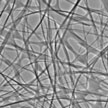 Nanotechnology has the potential to deliver the next generation lithium-ion batteries (LIBs) with improved performance, durability and safety at an acceptable cost. However, several challenging bottlenecks remain to build the ideal nanostructured electrodes for ultrafast rechargeable LIBs. To overcome these challenges, researchers developed a mechanical force-driven method to prepare elongated bending titania-based nanotubes for high-rate LIBs.
Nanotechnology has the potential to deliver the next generation lithium-ion batteries (LIBs) with improved performance, durability and safety at an acceptable cost. However, several challenging bottlenecks remain to build the ideal nanostructured electrodes for ultrafast rechargeable LIBs. To overcome these challenges, researchers developed a mechanical force-driven method to prepare elongated bending titania-based nanotubes for high-rate LIBs.
Sep 4th, 2014
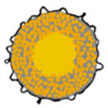 A three-dimensional crumpled graphene-encapsulated nickel sulfide electrode is reported as a superior high-energy lithium storage material. Compared with an electrode without crumpled graphene encapsulation, the optimized electrode yields significant improvements, especially in the cycling stability and rate capability. This enhanced performance is attributed to the 3D framework providing high continuous electron pathway and more free space for charge and mass transfer, and the stabilizing effect of the crumpled graphene based stretchy shell.
A three-dimensional crumpled graphene-encapsulated nickel sulfide electrode is reported as a superior high-energy lithium storage material. Compared with an electrode without crumpled graphene encapsulation, the optimized electrode yields significant improvements, especially in the cycling stability and rate capability. This enhanced performance is attributed to the 3D framework providing high continuous electron pathway and more free space for charge and mass transfer, and the stabilizing effect of the crumpled graphene based stretchy shell.
Aug 6th, 2014
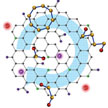 Sulfur is a very intriguing solution for the design of high energy density storage devices. The lithium-sulfur battery theoretically delivers an energy density which is 3-5 times higher than traditional lithium-ion batteries. Unfortunately, several obstacles so far have prevented the practical demonstration of sulfur-based cathodes for Li-S batteries. Among them, the most important one is the rapid capacity fading. Researchers have now developed a novel strategy towards highly stable Li-S batteries by building a strongly coupled interface between surface- mediated carbon hosts and various sulfur-containing guests.
Sulfur is a very intriguing solution for the design of high energy density storage devices. The lithium-sulfur battery theoretically delivers an energy density which is 3-5 times higher than traditional lithium-ion batteries. Unfortunately, several obstacles so far have prevented the practical demonstration of sulfur-based cathodes for Li-S batteries. Among them, the most important one is the rapid capacity fading. Researchers have now developed a novel strategy towards highly stable Li-S batteries by building a strongly coupled interface between surface- mediated carbon hosts and various sulfur-containing guests.
Aug 5th, 2014
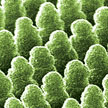 Nanotechnology has the potential to deliver the next generation lithium-ion batteries (LIBs) with improved performance, durability and safety at an acceptable cost. At present, there is a great deal of interest to upgrade the existing LIBs with improved properties and arrive at a battery technology that would permit smart-storage of electric energy. Futuristic smart electric grids that can provide an uninterruptible power supply to a household for 24 hours can replace the currently used lead acid battery systems by performing better in terms of longer back up time and reduced space requirements. With the advent of next generation LIBs, electric vehicles are expected to cover longer distances with shorter charging times; mobile phones and laptops are expected to be charged within minutes and last longer.
Nanotechnology has the potential to deliver the next generation lithium-ion batteries (LIBs) with improved performance, durability and safety at an acceptable cost. At present, there is a great deal of interest to upgrade the existing LIBs with improved properties and arrive at a battery technology that would permit smart-storage of electric energy. Futuristic smart electric grids that can provide an uninterruptible power supply to a household for 24 hours can replace the currently used lead acid battery systems by performing better in terms of longer back up time and reduced space requirements. With the advent of next generation LIBs, electric vehicles are expected to cover longer distances with shorter charging times; mobile phones and laptops are expected to be charged within minutes and last longer.
Jun 18th, 2014
 Energy-scavenging fabrics based on nano-sized generators that have piezoelectric properties could eventually lead to wearable 'smart' clothes that can power integrated electronics and sensors through ordinary body movements. Researchers have now demonstrated a new type of fully flexible, very robust and wearable triboelectric nanogenerator with high power-generating performance and mechanical robustness. This was achieved by applying a bottom-up nanostructuring approach where a silver-coated textile and polydimethylsiloxane (PDMS) nanopatterns based on ZnO nanorod arrays were used as active triboelectric materials.
Energy-scavenging fabrics based on nano-sized generators that have piezoelectric properties could eventually lead to wearable 'smart' clothes that can power integrated electronics and sensors through ordinary body movements. Researchers have now demonstrated a new type of fully flexible, very robust and wearable triboelectric nanogenerator with high power-generating performance and mechanical robustness. This was achieved by applying a bottom-up nanostructuring approach where a silver-coated textile and polydimethylsiloxane (PDMS) nanopatterns based on ZnO nanorod arrays were used as active triboelectric materials.
 Subscribe to our Nanotechnology Spotlight feed
Subscribe to our Nanotechnology Spotlight feed





